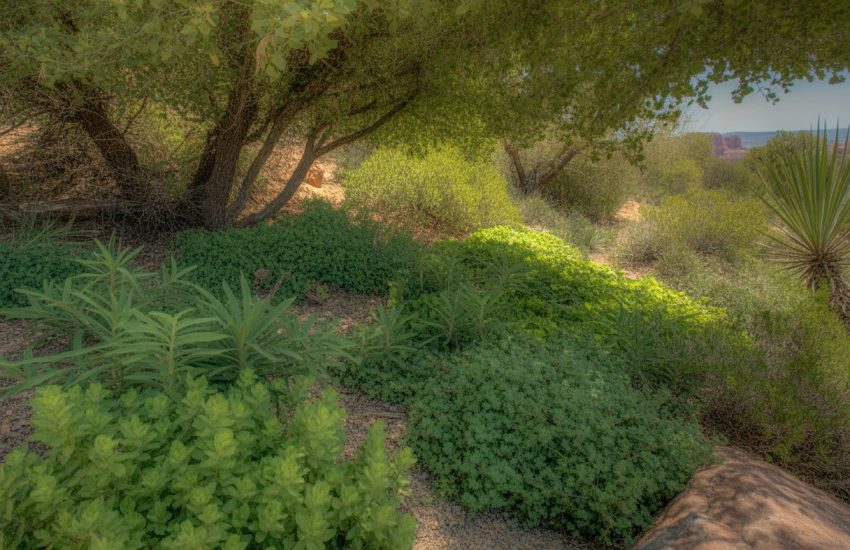Celosia: Where to Plant for Optimal Growth
Celosia is a beautiful flowering plant that is easy to grow and maintain. It is a popular choice for gardeners who want to add a pop of color to their outdoor space. However, choosing the right location to plant celosia is crucial for its growth and survival. In this article, we will discuss the best places to plant celosia and the factors to consider when choosing a location.
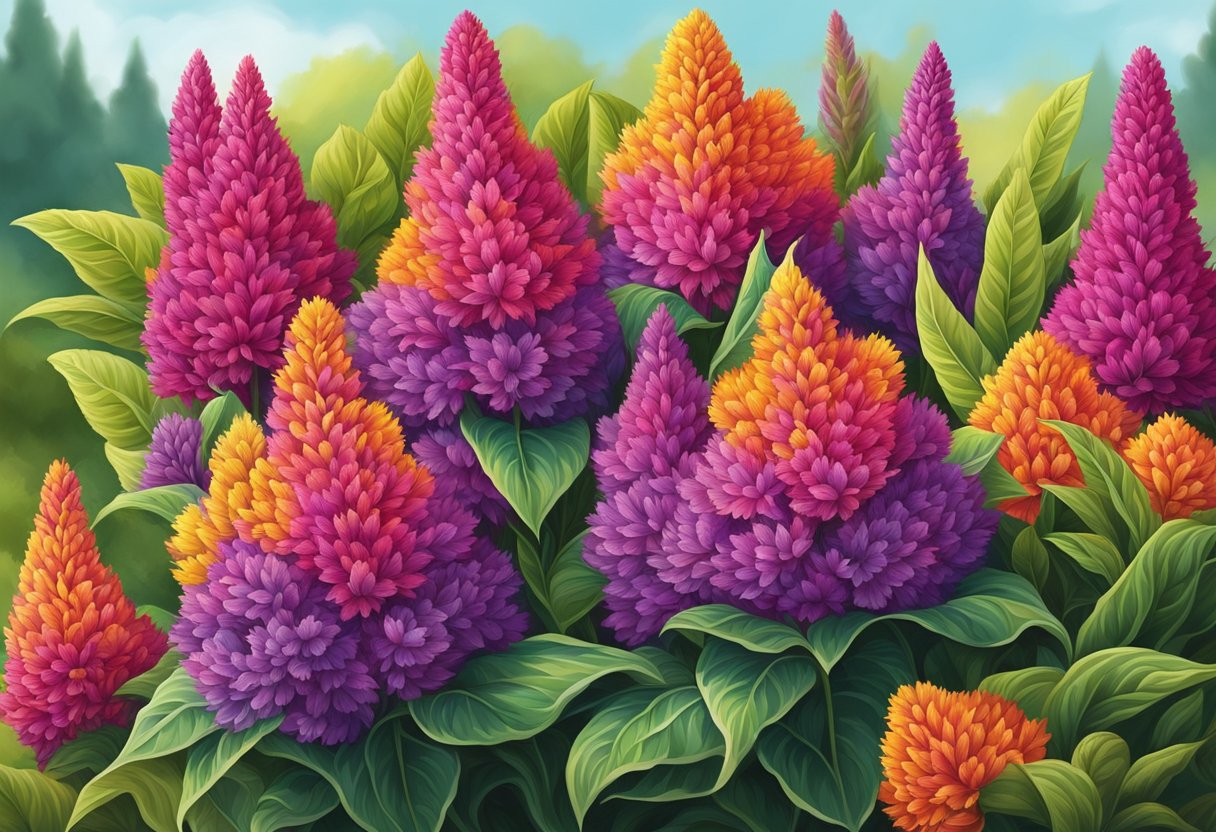
When it comes to planting celosia, the most important factor to consider is sunlight. Celosia requires at least six hours of direct sunlight per day to thrive. Therefore, it is best to plant celosia in a location that receives full sun. However, if you live in an area with hot summers, you may want to consider planting celosia in a spot that receives partial shade during the hottest part of the day.
Another factor to consider when planting celosia is soil type. Celosia prefers well-draining soil that is rich in organic matter. If your soil is heavy or clay-like, you may want to amend it with compost or other organic matter to improve drainage and fertility. Additionally, celosia is sensitive to soil pH, so it is important to test your soil and adjust the pH if necessary.
Understanding Celosia
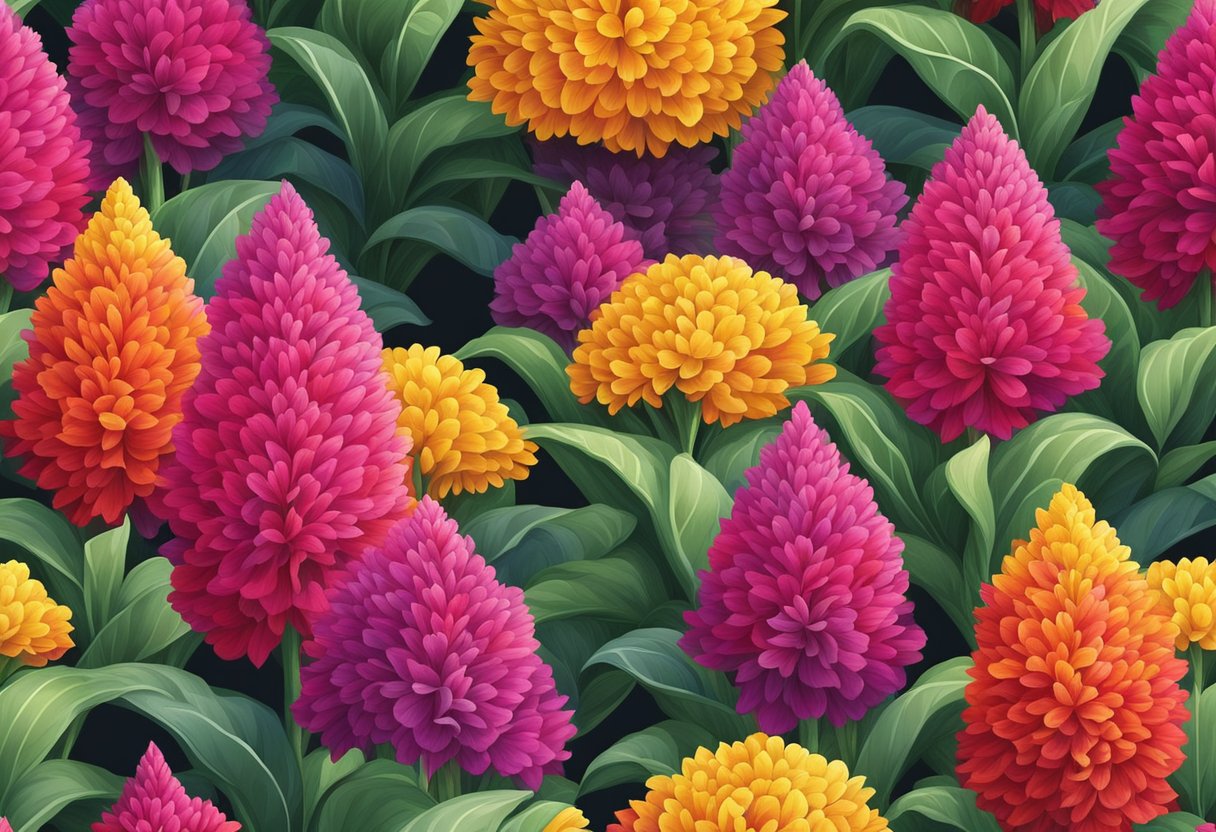
Celosia is a flowering plant that belongs to the Amaranthaceae family. It is a popular choice among gardeners due to its vibrant and long-lasting blooms. Celosia is a versatile plant that can be grown in a variety of settings, including gardens, containers, and hanging baskets.
Types of Celosia
There are three main types of celosia: Cockscomb, Cristata, Plumosa, and Spicata. Cockscomb celosia, also known as Celosia cristata, is the most common type of celosia. It gets its name from its unique shape, which resembles a rooster’s comb. Cristata celosia, also known as Crested Celosia, has a unique shape that resembles a brain or coral. Plumosa celosia, also known as Feather Celosia, has a feathery appearance due to its long, thin blooms. Spicata celosia, also known as Wheat Celosia, has a spiky appearance due to its long, narrow blooms.
Celosia Colors and Varieties
Celosia comes in a wide range of colors, including red, yellow, orange, pink, purple, and white. Some varieties even have bi-colored blooms. When selecting a celosia variety, it is important to consider the plant’s height and bloom size. Dwarf varieties are ideal for containers and small gardens, while taller varieties are better suited for larger gardens and landscapes.
In conclusion, understanding the different types of celosia and their colors and varieties can help gardeners choose the best plant for their specific needs. Celosia is a beautiful and versatile plant that can add a pop of color to any garden or landscape.
Optimal Planting Conditions

Celosia plants thrive in warm, humid conditions and can be grown in a variety of soil types. However, to ensure the best growth and health of your celosia plants, it is important to consider the following optimal planting conditions.
Soil Requirements
Celosia plants prefer well-drained soil with a slightly acidic to neutral pH. It is important to ensure that the soil has good drainage to prevent waterlogging, which can lead to root rot. If your soil has poor drainage, adding organic matter such as compost or sand can help improve it. Celosia can also tolerate clay soil as long as it is well-drained.
Light and Temperature
Celosia plants prefer full sun, which means they need at least 6 hours of direct sunlight per day. They can tolerate some shade, but too much shade can lead to weak growth and fewer blooms. Celosia plants also prefer warm temperatures, with a minimum temperature of 60°F (15°C) and a maximum temperature of 85°F (29°C).
Watering and Fertilizer Needs
Celosia plants require regular watering to keep the soil moist but not waterlogged. It is important to water deeply and avoid getting water on the leaves, which can lead to fungal diseases. Fertilizing celosia plants once a month with a balanced fertilizer can help promote healthy growth and blooming.
In summary, celosia plants prefer well-drained soil with a slightly acidic to neutral pH, full sun, warm temperatures, and regular watering and fertilizing. By providing these optimal planting conditions, you can ensure healthy growth and beautiful blooms for your celosia plants.
Planting Celosia
Celosia is a beautiful and low-maintenance plant that can add a pop of color to any garden. Here are some tips on planting and caring for celosia.
Best Time to Plant
Celosia can be planted outdoors after the last frost date in the spring. The ideal temperature for planting celosia is around 70°F. It is important to note that celosia is sensitive to frost and should be protected if there is a risk of frost.
Starting from Seeds
Celosia can be started from seeds indoors about 6-8 weeks before the last frost date. The seeds should be sown in a well-draining soil mix and kept moist until they germinate. Once the seedlings have grown to about 2-3 inches tall, they can be transplanted outdoors.
Transplanting Seedlings
When transplanting celosia seedlings, it is important to choose a sunny location with well-draining soil. The seedlings should be spaced about 6-8 inches apart to allow room for growth. After planting, it is important to keep the soil moist but not waterlogged.
Overall, celosia is a great addition to any garden and can be easily grown from seeds. With proper care and maintenance, celosia can provide beautiful blooms throughout the growing season.
Celosia Care and Maintenance
Celosia is a beautiful and low-maintenance plant that can thrive in a variety of growing conditions. With proper care and maintenance, you can enjoy its vibrant colors and unique texture for months on end. Here are some tips to help you keep your celosia healthy and happy.
Pruning and Deadheading
Pruning and deadheading are essential for maintaining the health and appearance of your celosia. Deadheading, or removing spent flowers, encourages the plant to produce more blooms and prevents it from wasting energy on seed production. Pruning, on the other hand, involves removing damaged or diseased stems and leaves to promote new growth.
To deadhead your celosia, simply pinch off the spent flowers as soon as they begin to wilt. For pruning, use clean, sharp scissors or pruning shears to remove any dead or damaged stems and leaves. Be sure to cut just above a healthy leaf node to encourage new growth.
Pest and Disease Management
Like all plants, celosia is susceptible to pests and diseases. Two common pests that can affect celosia are mites and aphids. Mites are tiny insects that can cause leaf discoloration and damage, while aphids feed on the sap of the plant and can cause stunted growth.
To manage these pests, you can use insecticidal soap or neem oil. Simply spray the affected areas of the plant with the solution, being sure to cover both the tops and bottoms of the leaves. For fungal diseases such as leaf spot and mildew, remove any infected leaves and treat the plant with a fungicide.
Seasonal Care
Celosia is a warm-season plant that thrives in temperatures between 60 and 85 degrees Fahrenheit. In colder climates, it is typically grown as an annual and should be planted in the spring after the last frost. In warmer climates, celosia can be grown year-round.
To keep your celosia healthy during the growing season, be sure to water it regularly and fertilize it every two to three weeks with a balanced fertilizer. In the fall, you can cut back on watering and fertilizing to prepare the plant for dormancy.
By following these simple tips for care and maintenance, you can enjoy the beauty of celosia in your garden or home for months on end.
Designing with Celosia
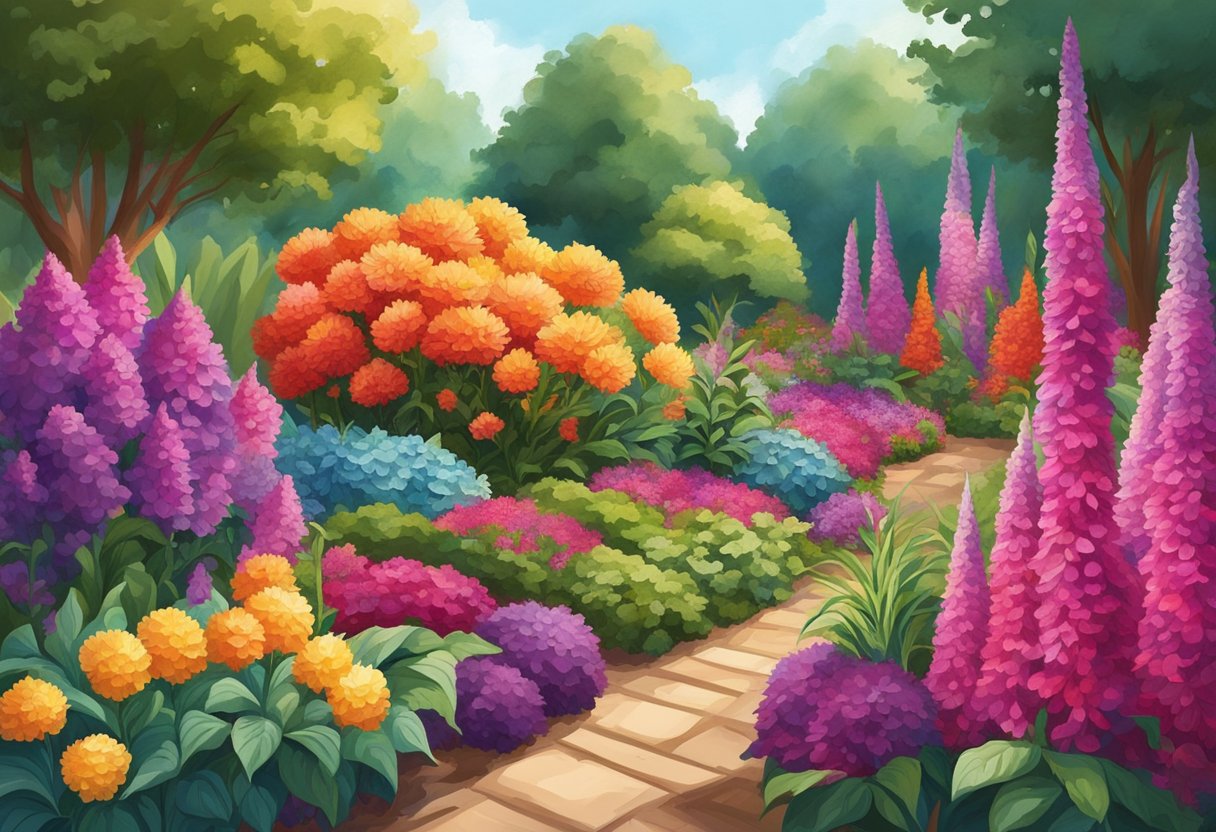
Celosia is a versatile plant that can be used in a variety of ways in garden design. Here are some ideas for incorporating celosia into your landscape, container gardens, and cut flower arrangements.
Landscape Use
Celosia is an excellent choice for adding color and texture to garden beds and borders. It can be planted in masses for a bold statement or used as an accent plant to add interest to a mixed planting. Celosia is also a great choice for cutting gardens, where it can be used to add height and structure to flower arrangements.
Container Gardening
Celosia is well-suited for container gardening and can be grown in pots of all sizes. It is particularly well-suited for mixed container gardens, where it can be combined with other annuals and perennials to create a vibrant display. Celosia also works well in hanging baskets, where its trailing habit can be used to great effect.
Cut Flowers and Bouquets
Celosia is a popular choice for cut flower arrangements and bouquets. Its long-lasting blooms come in a range of colors, from bright reds and oranges to softer pinks and purples. Celosia can be used on its own or combined with other flowers to create a stunning display. To get the most out of your celosia blooms, be sure to cut them when they are just starting to open and place them in a vase with fresh water and floral preservative.
Overall, celosia is a versatile and attractive plant that can be used in a variety of ways in garden design. Whether you are looking to add color and texture to garden beds, create a stunning container garden, or add interest to a cut flower arrangement, celosia is a great choice.
Propagation and Breeding
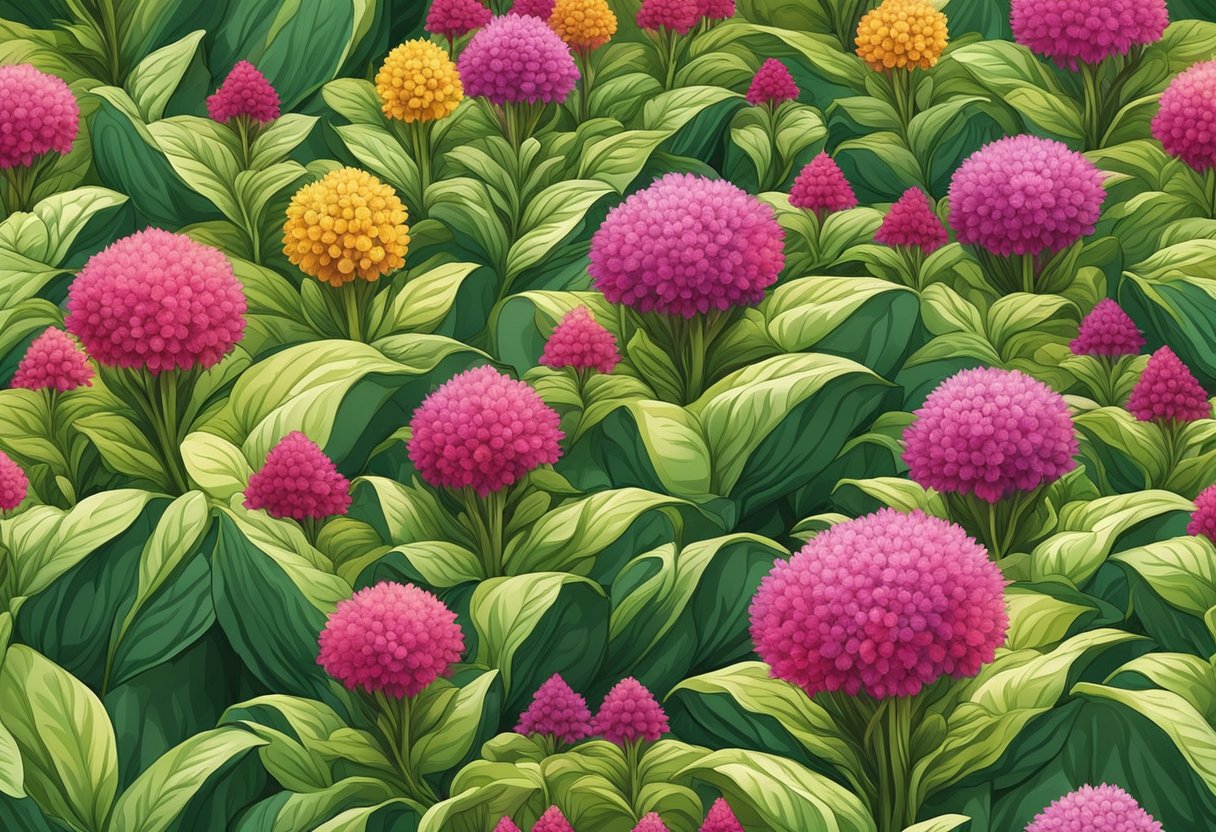
Propagating by Cuttings
Celosia plants can be propagated by stem cuttings. It is best to take cuttings from healthy, mature plants during the growing season. Using a sharp, clean pair of scissors, cut a 4-6 inch stem from the parent plant, just below a node. Remove leaves from the bottom half of the stem and dip the cut end into rooting hormone. Plant the cutting in a pot filled with a well-draining soil mix and keep it moist. After a few weeks, the cutting should root and can be transplanted into a larger container or garden bed.
Encouraging Reseeding
Celosia plants can also reseed themselves if allowed to go to seed. To encourage reseeding, leave spent flowers on the plant until they turn brown and dry out. Once the flowers have dried, gently shake the plant to release the seeds. Alternatively, cut the seed heads off and place them in a paper bag to dry. Once the seeds have dried, store them in a cool, dry place until the next planting season.
By propagating through cuttings or encouraging reseeding, gardeners can easily grow more celosia plants without having to purchase new seed packets each year.
Varietal Selection and Adaptation

Choosing the Right Variety
When it comes to planting celosia, selecting the right variety is key to ensuring a successful harvest. There are several types of celosia to choose from, including plumed, crested, and wheat celosia. Each type has its own unique characteristics and growing requirements.
Plumed celosia, for example, produces feathery blooms that come in a variety of colors, including red, yellow, and pink. Crested celosia, on the other hand, has a more compact shape and produces blooms that resemble rooster combs. Wheat celosia produces long, narrow flowers that resemble wheat stalks.
When choosing a variety of celosia, it’s important to consider factors such as the size of the plant, the color and shape of the blooms, and the hardiness zone in which it will be grown.
Adapting to Climate Zones
Celosia is a warm-weather plant that thrives in hot, sunny conditions. It is best suited for hardiness zones 10 and above, where temperatures rarely dip below 30°F. In cooler climates, celosia can be grown as an annual, but it may not produce as many blooms or reach its full potential.
To adapt to different climate zones, it’s important to choose a variety of celosia that is well-suited to the local climate. For example, plumed celosia is better suited to hot, dry climates, while wheat celosia can tolerate more humid conditions.
Overall, choosing the right variety of celosia and adapting it to the local climate can help ensure a successful harvest and vibrant, colorful blooms.
Special Considerations

Growing as Perennials
Celosia can be grown as perennials in USDA hardiness zones 10 and 11. They prefer warm temperatures and well-draining soil. When planting celosia as perennials, it is important to choose a location that receives full sun and has good air circulation. Celosia can be susceptible to fungal diseases, so it is important to avoid planting them in areas with high humidity or poor air circulation.
Using as Annuals
Celosia can also be used as annuals in colder climates. They can be grown from seed or purchased as seedlings and planted after the last frost. When planting celosia as annuals, it is important to choose a location that receives full sun and has well-draining soil. Celosia can be susceptible to root rot, so it is important to avoid planting them in areas with poor drainage.
When planting celosia, it is important to consider their growth habits. Some varieties can grow quite tall and may require staking or support. It is also important to consider the color and size of the flowers when choosing a location to plant celosia. They can be used in garden beds, borders, or containers.
Overall, celosia are versatile plants that can be grown as perennials or annuals depending on the climate. With proper care and consideration of their growth habits, celosia can add color and texture to any garden.
Harvesting and Post-Care
Drying and Preserving
Celosia is a great plant to dry and preserve for long-lasting beauty. To dry celosia, simply cut the stems and hang them upside down in a dry, well-ventilated area. Once the flowers have dried, they can be used for a variety of decorative purposes, such as wreaths, bouquets, and centerpieces.
If you want to preserve the color of the flowers, try spraying them with hairspray or a clear acrylic spray. This will help to protect the flowers from fading and keep them looking vibrant for longer.
Post-Bloom Care
After the celosia has finished blooming, it is important to properly care for the plant to ensure its health and longevity. First, remove any dead or dying flowers to encourage new growth. If you want to save the seeds for next year’s planting, allow the flowers to fully mature and dry on the plant before harvesting.
Once the plant has finished blooming for the season, it can be cut back to the ground. The stems and leaves can be added to your compost pile to help enrich the soil for future plantings.
By following these simple steps, you can enjoy the beauty of celosia for years to come.
Companion Planting
Celosia is a versatile plant that can be grown with a variety of other plants. Companion planting is a great way to maximize the benefits of your garden. Here are some tips for companion planting with celosia.
Compatible Garden Companions
Celosia can be grown with a variety of plants, including zinnias and marigolds. These plants have similar growing conditions and can complement each other well. Zinnias are known for their bright colors, and they can add a pop of color to your garden when grown with celosia. Marigolds are also great companions for celosia, as they can help repel pests and attract beneficial insects.
Avoiding Incompatible Plants
While celosia can be grown with many plants, there are some plants that should be avoided. Plants that require different growing conditions or soil types should not be planted with celosia. For example, plants that require acidic soil should not be grown with celosia, as celosia prefers neutral to slightly alkaline soil.
In addition, plants that are prone to diseases or pests should not be grown with celosia. This can increase the risk of disease and pest infestations in your garden. It is also important to avoid planting celosia near plants that are known to attract pests, such as tomatoes.
Overall, celosia is a great addition to any garden. By following these tips for companion planting, you can ensure that your celosia plants thrive and complement the other plants in your garden.
Celosia’s Global Influence
Origins and History
Celosia, a member of the amaranth family, has a rich history that spans continents and cultures. Its origins can be traced back to Africa, where it was first cultivated for its nutritious leaves and seeds. The plant’s vibrant flowers were later discovered and became popular for their ornamental value.
In South America, celosia was also highly valued for its medicinal properties. It was used to treat a variety of ailments, including fever, headaches, and digestive issues. The plant was also used in religious ceremonies and was believed to have spiritual significance.
Cultural Significance
Celosia’s global influence can be seen in its cultural significance. In Africa, the plant is still commonly used in traditional medicine and is also an important part of local cuisine. In South America, celosia is still used in religious ceremonies and is considered a symbol of good luck.
The plant’s vibrant colors and unique shape have also made it a popular ornamental plant around the world. It is often used in flower arrangements and is a favorite among gardeners.
Overall, celosia’s global influence can be attributed to its versatility and beauty. It has played an important role in various cultures throughout history and continues to be valued for its many uses today.
Frequently Asked Questions
What are the ideal lighting conditions for growing celosia?
Celosia plants prefer full sun to partial shade. They grow best in areas with bright, direct sunlight for at least six hours a day. However, they can also tolerate some shade, especially in hot climates.
How often should celosia be watered?
Celosia plants require regular watering to thrive. They should be watered deeply once a week, or more frequently in hot, dry weather. It’s important to avoid overwatering, as this can cause root rot and other problems.
What is the best method for propagating celosia?
Celosia can be propagated from seeds or cuttings. Seeds should be sown in well-draining soil and kept moist until they germinate. Cuttings should be taken from healthy, mature plants and rooted in a well-draining soil mixture.
Can celosia thrive indoors, and if so, how can they be properly cared for?
Celosia can be grown indoors, but they require bright, direct sunlight to thrive. They should be placed near a south-facing window or under grow lights. Indoor celosia plants should be watered regularly, but not overwatered.
What is the typical lifespan of a celosia plant?
Celosia plants are annuals, meaning they complete their life cycle in one growing season. They typically bloom from mid-summer to fall and then die back in the winter.
How large can celosia plants grow, and how should they be spaced in the garden?
Celosia plants can grow up to 2-3 feet tall and 1-2 feet wide, depending on the variety. They should be spaced 12-18 inches apart in the garden to allow for proper air circulation and growth.

